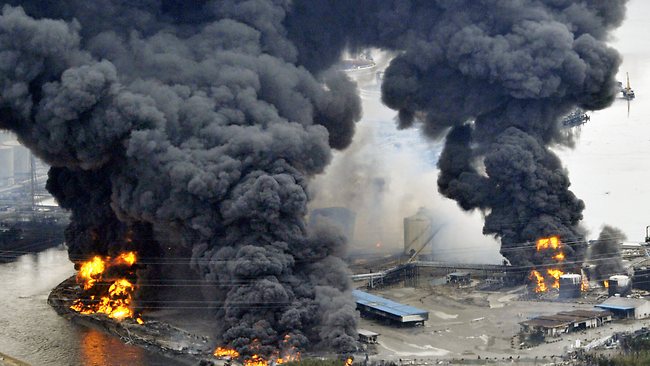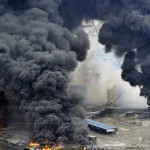
 The fuel used in the Japanese nuclear reactor where an explosion occurred today is more volatile and toxic than the fuel used in the other reactors there, a Japanese nuclear expert warned.
The fuel used in the Japanese nuclear reactor where an explosion occurred today is more volatile and toxic than the fuel used in the other reactors there, a Japanese nuclear expert warned.
At a press conference in Tokyo, Masashi Goto, who worked for Toshiba as a reactor researcher and designer, said the mixed oxide fuel (MOX) used in unit 3 of the Fukushima Daiichi nuclear plant contains plutonium, which is much more toxic than the fuel used in the other reactors. Mixed oxide fuel is a mixture of uranium and plutonium reprocessed from spent uranium, and is sometimes involved in the disposal of weapons-grade plutonium. Goto added that the mixed oxide fuel also has a lower melting point than the other fuels. The Fukushima facility began using mixed oxide fuel last September, becoming the third plant in Japan to do so.
The nuclear crisis began when the 8.9-magnitude earthquake and tsunamis struck northern Japan on Friday. (Japan’s Meteorological Agency upgraded the earthquake to 9.0 on the Richter scale, but so far the U.S. Geological Survey has not changed its measurement of 8.9.)
Unit 3’s reactor housing was destroyed earlier Monday in a hydrogen-fueled blast similar but larger to the one that destroyed unit 1’s housing Saturday. Eleven people were injured. The blast also hindered efforts to pump sea water into unit 2 to cool it down, Goto said.
“According to announcements, there appears to be no major damage to the containment vessel” of reactor No. 3, Goto said at the Foreign Correspondents’ Club of Japan. “In other words, it is able to fulfill its function.”
But it’s still unknown whether the outside of the containment vessel had been damaged in the blast, he added. The fuel rods of unit 2’s reactor were fully exposed despite attempts to pump water into the chamber, according to Japanese media reports today. Goto, however, stressed that nobody can see inside the chamber to confirm the water level.
When asked why the explosion at the No. 3 reactor seemed much more violent than Saturday’s explosion at the No. 1 reactor building, Goto said he suspected that more hydrogen had accumulated in the building before exploding.
He emphasized the three most critical factors for the time being: a steady supply of electrical power to the plant, supply of water to cool the reactors, and the supply of fuel to the water pumps. He added that fuel for the current makeshift pump system had been running low even before the latest blast.
The two most dangerous situations to monitor are the state of the reactor cores and the containment vessels. When asked about the worst-case scenario, Goto said he would “rather not think about that.” He also said there are too many factors to figure to make a solid conclusion on what will happen.



